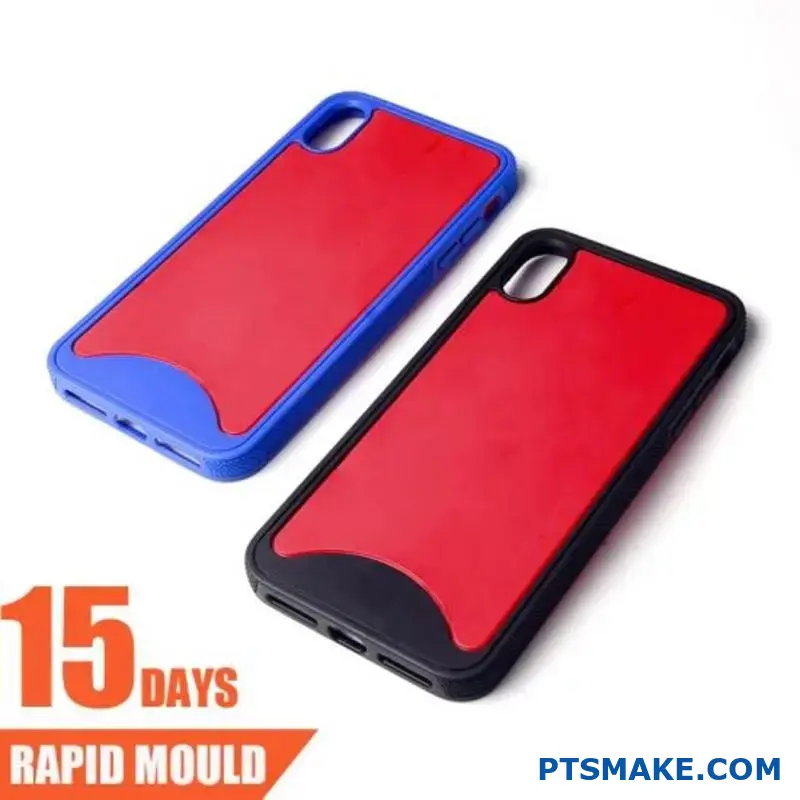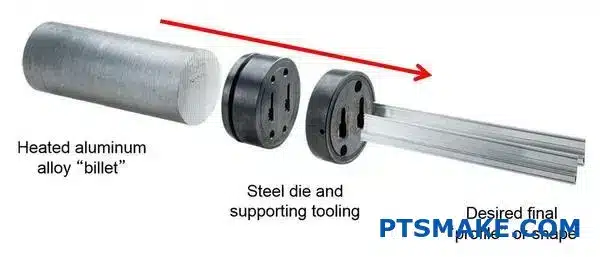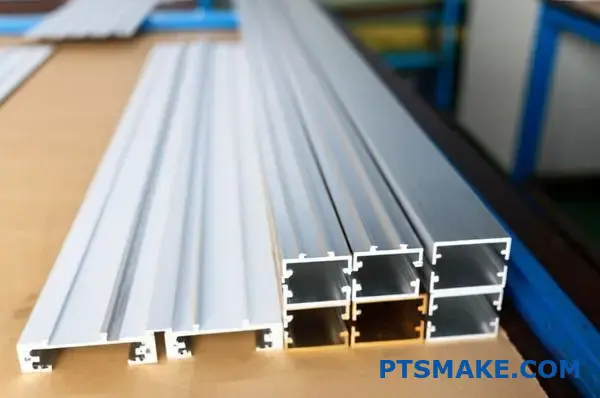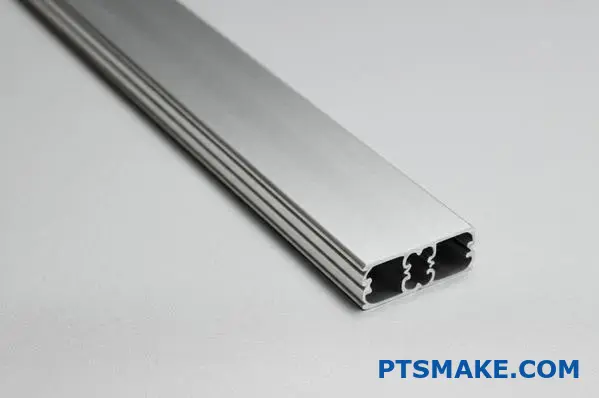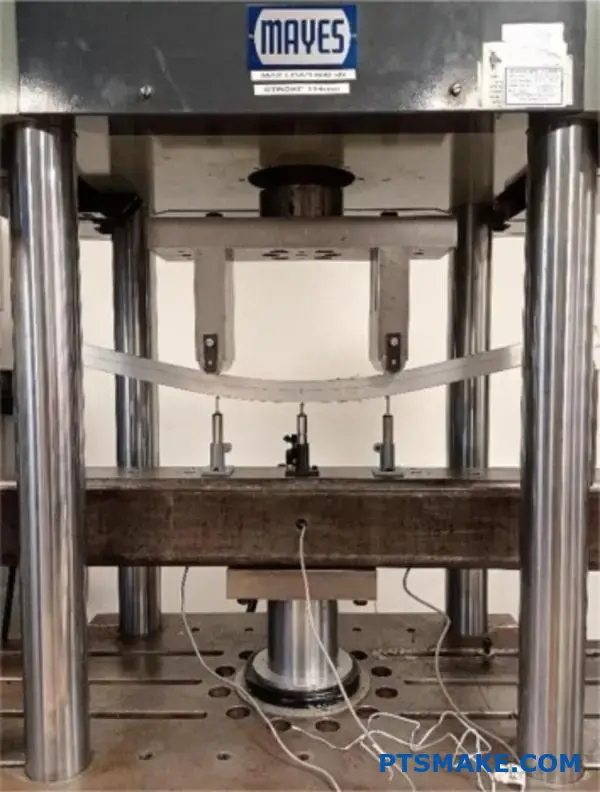Understanding Eccentric Screws: Basics and Applications
Ever wondered why some mechanical connections can adjust with precision without the need for complex systems? The answer might be hiding in plain sight – eccentric screws, the unsung heroes of modern machinery.
Eccentric screws represent a fascinating intersection of simple design and ingenious functionality, featuring an intentionally offset relationship between shaft and head that creates adjustable motion when rotated, making them essential components in countless precision applications.
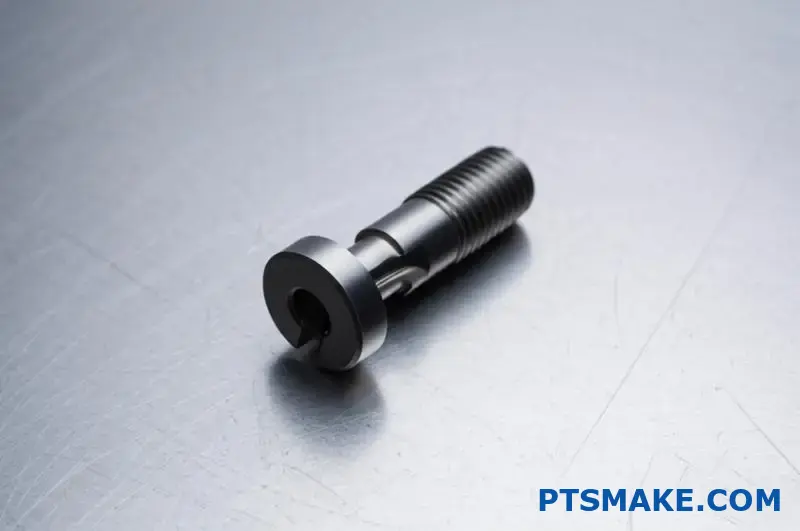
In my years working with precision components at PTSMAKE, eccentric screws have consistently proven to be among the most versatile fasteners in modern manufacturing. These specialized fasteners might not command the spotlight like more visible components, but their unique design enables functions that standard screws simply cannot achieve.
What Makes Eccentric Screws Different?
The defining characteristic of eccentric screws is their intentional offset design. Unlike conventional screws where the axis of the shaft aligns perfectly with the center of the head, eccentric screws feature a deliberate misalignment. This offset creates a cam-like action when the screw is rotated, allowing for precise positioning and adjustment.

The offset relationship introduces what we call eccentricity1 – the measured distance between the central axis of the shaft and the axis of the head. This seemingly minor design variation creates remarkable functional differences:
Key Design Elements of Eccentric Screws
- Head Design: Often larger and designed for easy gripping and rotation
- Shaft Configuration: Precision-machined with exact offset measurements
- Thread Specifications: Customized for specific applications and load requirements
- Material Selection: Typically hardened steel, stainless steel, or specialized alloys
The manufacturing of eccentric screws requires significantly tighter tolerances than standard fasteners. At PTSMAKE, we’ve refined our CNC machining processes specifically to achieve the precise offsets these components demand.
Common Applications Across Industries
The unique properties of eccentric screws make them invaluable across multiple sectors:
Furniture Industry Applications
In furniture manufacturing, eccentric screws serve as the foundation for many assembly systems. They enable:
- Quick-assembly connections in flat-pack furniture
- Height adjustment mechanisms in tables and desks
- Tension control in adjustable furniture components
- Cabinet door alignment systems
Automotive Sector Implementation
Modern vehicles contain numerous eccentric screw applications:

- Headlight alignment mechanisms
- Suspension component adjustments
- Engine timing belt tensioners
- Dashboard and interior component mounting
In automotive manufacturing, the precision of these components directly impacts both safety and performance. Our automotive clients specifically request eccentric screws manufactured to exacting specifications that exceed standard tolerances.
Industrial Machinery Uses
In industrial equipment, eccentric screws handle crucial adjustment functions:
| Application | Function | Typical Eccentricity Range |
|---|---|---|
| CNC Machine Guides | Positioning accuracy | 0.05mm – 0.5mm |
| Conveyor Systems | Belt tension adjustment | 1mm – 5mm |
| Printing Presses | Registration alignment | 0.1mm – 1mm |
| Packaging Equipment | Guide rail positioning | 0.5mm – 3mm |
The industrial sector often requires customized eccentric screw solutions that balance precision with durability under continuous operation.
Precision Equipment Applications
Perhaps the most demanding use cases come from precision equipment:
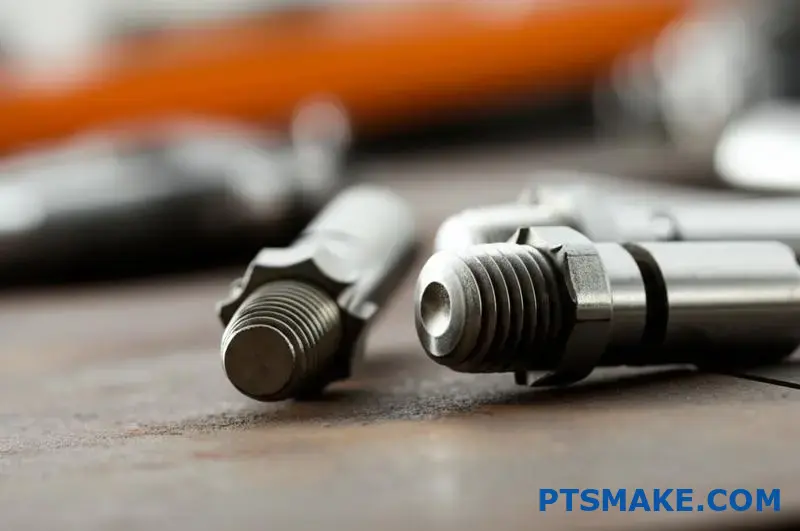
- Optical instruments requiring micro-adjustments
- Laboratory equipment calibration mechanisms
- Medical device positioning systems
- Measurement equipment datum references
In these applications, eccentric screws may need to provide adjustments measurable in microns, requiring manufacturing processes that push the boundaries of conventional machining capabilities.
Selecting the Right Eccentric Screw
When helping clients choose appropriate eccentric screws, I consider several factors:
- Load Requirements: The forces the screw will need to withstand
- Adjustment Range: The total movement needed from minimum to maximum positions
- Installation Space: Available room for both the screw and the rotation clearance
- Environmental Conditions: Exposure to temperature extremes, moisture, or corrosive substances
- Frequency of Adjustment: How often the screw will be rotated for position changes
The interplay between these factors determines not just the eccentricity needed, but also material selection, thread pitch, and head design. What appears to be a simple component actually represents a careful engineering balance.
Through our work at PTSMAKE, I’ve found that taking the time to properly specify eccentric screw requirements upfront saves significant troubleshooting during implementation. Too often, manufacturers select these components based solely on general dimensions without considering the specific application demands.
Materials and Standards in Eccentric Screw Production
Ever wonder why some eccentric screws perform flawlessly for decades while others fail within months? The secret lies not in their design alone, but in the carefully selected materials that bring that design to life.
The materials and standards governing eccentric screw manufacturing form the foundation of their reliability, with each material choice and certification requirement directly impacting performance across industries from food processing to oil extraction.

When manufacturing eccentric screws, material selection is perhaps the most critical decision affecting both performance and longevity. Throughout my years at PTSMAKE, I’ve seen firsthand how material properties dramatically influence everything from wear resistance to load-bearing capacity.
Primary Materials for Eccentric Screw Manufacturing
The material selection process must account for several factors including operating environment, mechanical stress, chemical exposure, and cost considerations. Let’s examine the most commonly used materials:
Stainless Steel Varieties
Stainless steel remains the gold standard for eccentric screw manufacturing due to its exceptional combination of properties:
316/316L Stainless Steel: The workhorse of the food, pharmaceutical, and chemical industries due to its superior corrosion resistance. Its molybdenum content makes it particularly resistant to chlorides and process acids.
304/304L Stainless Steel: A more economical option with excellent general corrosion resistance, typically used in less aggressive environments.
17-4 PH Stainless Steel: When strength matters most, this precipitation-hardened stainless offers outstanding mechanical properties while maintaining good corrosion resistance.

I’ve observed that properly specified stainless steel eccentric screws can operate for 5-10 years in demanding environments before requiring replacement, making them ideal for applications where maintenance access is difficult or costly.
Aluminum Alloys
For weight-sensitive applications, aluminum alloys offer compelling advantages:
6061-T6: The most versatile aluminum alloy, offering good strength, corrosion resistance, and machinability. At PTSMAKE, we frequently recommend this for applications requiring weight reduction.
7075-T6: When maximum strength-to-weight ratio is required, this aerospace-grade aluminum is our go-to recommendation, though at higher cost.
2024-T3: Offers excellent fatigue resistance, making it suitable for cyclical-load applications.
Aluminum eccentric screws weigh approximately 35% of their steel equivalents, creating significant advantages in mobile equipment and aerospace applications.
Brass and Bronze Options
These copper-based alloys shine in applications requiring special properties:
C360 Brass (Free-Cutting Brass): Excellent machinability with good corrosion resistance, often used in electrical applications.
C932 Bearing Bronze: Self-lubricating properties make it ideal for eccentric screws in applications with limited lubrication.
C655 Silicon Bronze: Exceptional corrosion resistance, especially in marine environments.
The galvanic compatibility2 between these materials and mating components must be carefully considered to prevent accelerated corrosion.
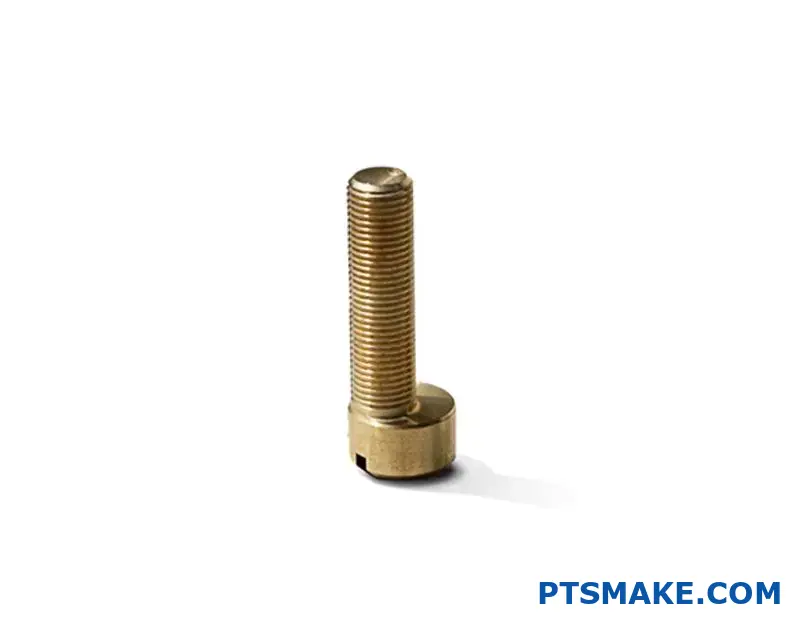
Specialty Materials for Extreme Conditions
For particularly demanding applications, we sometimes recommend specialty materials:
| Material | Key Properties | Typical Applications |
|---|---|---|
| Inconel 718 | High temperature resistance, exceptional strength | Petrochemical, aerospace |
| Titanium Grade 5 | Superior strength-to-weight, biocompatibility | Medical, aerospace |
| Hastelloy C-276 | Extreme corrosion resistance | Chemical processing |
| Duplex Stainless | Combined strength and corrosion resistance | Offshore, desalination |
These materials typically increase manufacturing costs by 300-500% compared to standard stainless steel but may prove economical when considering total lifecycle costs in extreme environments.
International Standards Governing Eccentric Screw Production
The manufacturing of eccentric screws is regulated by various international standards that ensure consistency, quality, and interchangeability:
ISO Standards
International Organization for Standardization (ISO) provides globally recognized specifications:
- ISO 898: Defines mechanical properties for fasteners made of carbon steel and alloy steel
- ISO 3506: Covers mechanical properties of corrosion-resistant stainless steel fasteners
- ISO 4042: Specifies electroplated coatings for fasteners
- ISO 9001: Quality management systems requirements
At PTSMAKE, our ISO 9001 certification provides our clients with confidence that our eccentric screws meet consistent quality standards.
DIN Standards
German Institute for Standardization (DIN) standards remain influential in precision engineering:
- DIN 931/933: Defines dimensions for hex bolts
- DIN 912: Specifications for socket head cap screws
- DIN 125: Flat washer dimensions
- DIN 127: Spring lock washer requirements

JIS Standards
Japanese Industrial Standards (JIS) are particularly important for Asian markets:
- JIS B 1176: Specifications for hex socket head cap screws
- JIS G 4303: Stainless steel bars standard
- JIS G 4305: Cold-rolled stainless steel plates and sheets
ANSI/ASME Standards
American National Standards Institute (ANSI) and American Society of Mechanical Engineers (ASME) standards dominate North American specifications:
- ASME B18.2.1: Square and hex bolts and screws
- ASME B18.3: Socket cap, shoulder, and set screws
- ASME B1.1: Unified inch screw threads
Certification Requirements for Quality Assurance
To ensure eccentric screws perform as expected, several certifications may be required:
Material Certifications
- 3.1 Certificate: Confirms material properties through testing of the production batch
- 3.2 Certificate: Requires independent third-party verification of material properties
- RoHS Compliance: Certifies absence of restricted hazardous substances
- REACH Compliance: Ensures registration and safety assessment of chemical substances
Quality Process Certifications
- ISO 9001: Quality management system
- IATF 16949: Quality management system for automotive production
- AS9100: Quality management system for aerospace
- ISO 13485: Quality management system for medical devices
When manufacturers like PTSMAKE maintain these certifications, customers receive documented assurance that eccentric screws meet all applicable standards.
Performance Testing Certifications
- Hardness Testing: Confirms material hardness to specified standards
- Tensile Testing: Verifies strength characteristics
- Dimensional Verification: Ensures all critical dimensions meet specifications
- Surface Treatment Verification: Confirms coating thickness and adhesion
These certifications aren’t just paperwork—they represent verifiable evidence of component quality that directly impacts performance and safety in applications.
Manufacturing Processes and Techniques
Have you ever wondered how those precisely crafted eccentric screws—the ones that make your machinery function with perfect precision—actually come to life? The journey from raw metal to finished component is more fascinating than you might imagine.
Eccentric screw manufacturing combines traditional metalworking with cutting-edge precision engineering, utilizing specialized processes like cold heading and thread rolling alongside advanced CNC machining to achieve the exact dimensional offsets that make these components uniquely valuable.

At PTSMAKE, our manufacturing approach for eccentric screws has evolved significantly over the years, balancing efficiency with the precision these specialized components demand. The manufacturing process isn’t simply about creating a fastener—it’s about crafting a precision instrument that enables exact adjustments in critical applications.
Cold Heading: The Foundation of Efficient Manufacturing
Cold heading represents one of the most efficient methods for producing the initial form of eccentric screws, particularly for high-volume production runs.
The Cold Heading Process Explained
Cold heading (also called cold forming) is a metal forming process that shapes metal without removing material. The process works by:
- Feeding wire stock into the machine
- Cutting the wire to a predetermined length
- Forming the head through a series of dies under high pressure
- Creating the desired head geometry while maintaining precise dimensional control
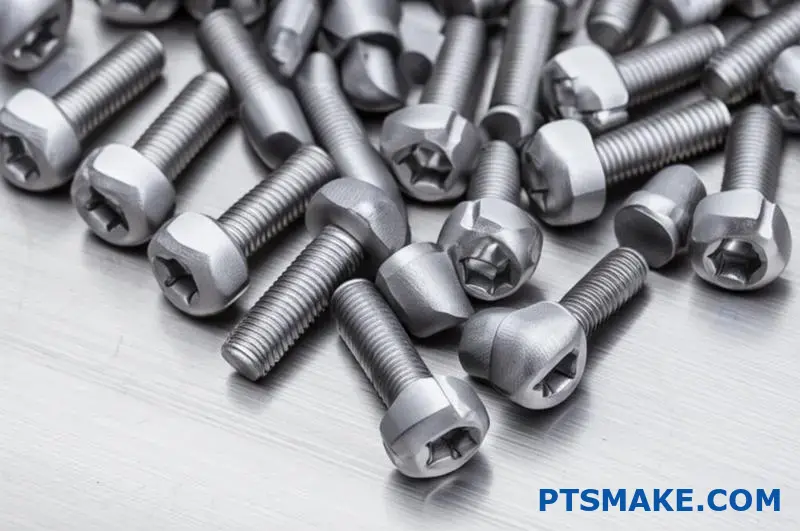
Cold heading offers several distinct advantages when manufacturing eccentric screws:
- Material efficiency: Nearly 100% of input material is utilized in the final product
- Production speed: Output rates up to 300 parts per minute for standard configurations
- Enhanced strength: The cold working process actually strengthens the metal through work hardening
- Dimensional consistency: High repeatability across large production runs
For eccentric screws specifically, specialized multi-stage dies must be designed to create the intentional offset between the head and shaft centerlines. While this adds complexity to the tooling design, it significantly reduces per-unit costs at scale.
Material Considerations for Cold Heading
Not all materials are equally suitable for cold heading eccentric geometry3 components:
| Material | Cold Heading Suitability | Notes |
|---|---|---|
| Low-carbon steel | Excellent | Most commonly used for standard applications |
| Medium-carbon steel | Good | Requires annealing pre-treatment |
| Stainless steel (304, 316) | Moderate | Higher forces required, tool wear increases |
| Aluminum alloys | Good | Lower forces required, but less dimensional stability |
| Titanium alloys | Poor | Rarely cold headed, typically machined instead |
At PTSMAKE, we often recommend cold heading for high-volume eccentric screw production in standard materials, while reserving CNC machining for specialty alloys or custom designs.
Thread Rolling: Precision Without Compromise
Thread rolling stands as the preferred method for creating threads on eccentric screws due to its combination of strength, precision, and efficiency.
How Thread Rolling Works
Unlike thread cutting, which removes material to create threads, thread rolling plastically deforms the material:
- The screw blank is placed between hardened dies with thread profiles
- The dies apply pressure, forcing the material to flow into the thread shape
- The material grain follows the thread contour, enhancing strength
- The process creates work hardening at the thread surface, improving wear resistance
This cold-working process creates threads with superior mechanical properties compared to cut threads, including:
- Up to 30% greater tensile strength at the thread root
- Improved fatigue resistance
- Enhanced thread surface finish
- No material waste
Critical Parameters in Thread Rolling for Eccentric Screws
When thread rolling eccentric screws, several parameters require precise control:
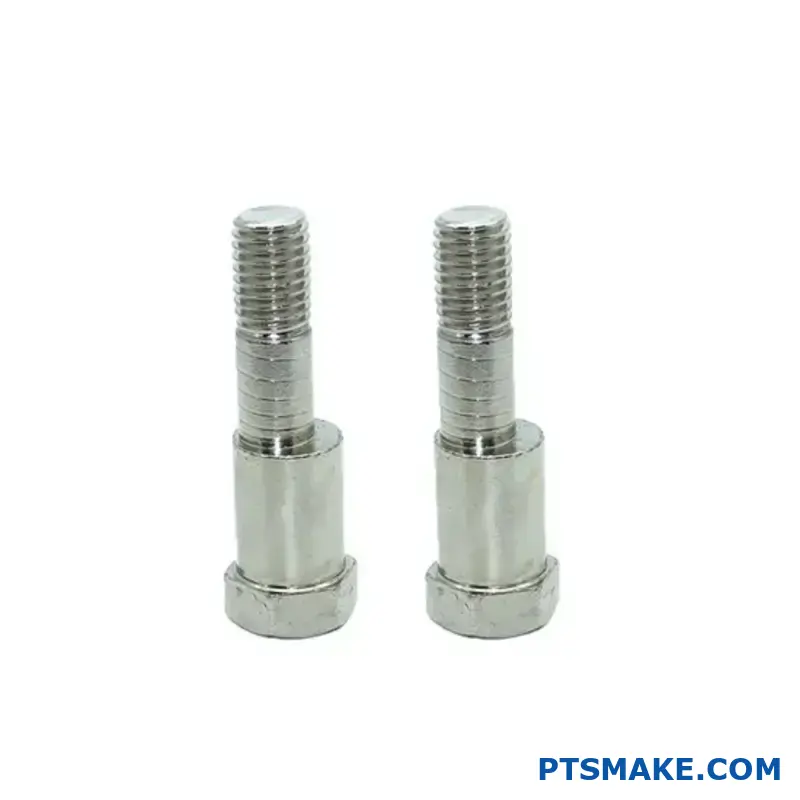
- Die pressure: Must be carefully calibrated to ensure complete thread formation without excessive deformation
- Rolling speed: Affects surface finish and production rate
- Blank diameter: Must account for material displacement during rolling
- Lubrication: Critical for die life and thread quality
The eccentric nature of these screws presents unique challenges during thread rolling, as the offset head can create imbalanced forces during the rolling process. Special fixturing is often required to maintain proper alignment.
CNC Machining: The Precision Approach
For lower-volume production runs, complex designs, or specialty materials, CNC machining becomes the method of choice for eccentric screw manufacturing.
CNC Machining Process Flow
The typical CNC machining process for eccentric screws involves:
- Programming: Creating toolpaths that account for the eccentric relationship between head and shaft
- Material selection: Choosing appropriate bar stock or blanks
- Initial turning: Establishing the basic shaft profile and dimensions
- Eccentric feature machining: Creating the offset relationship through specialized fixturing
- Thread milling/cutting: Forming threads through cutting rather than forming
- Secondary operations: Drilling, milling slots, adding drive features
- Finishing: Deburring, polishing, or applying surface treatments
CNC machining offers unmatched flexibility for producing eccentric screws with varying degrees of eccentricity, complex head designs, or unusual thread forms that would be impractical to produce through cold heading.
Advanced CNC Machining Considerations
Manufacturing highly precise eccentric screws through CNC methods requires attention to several factors:
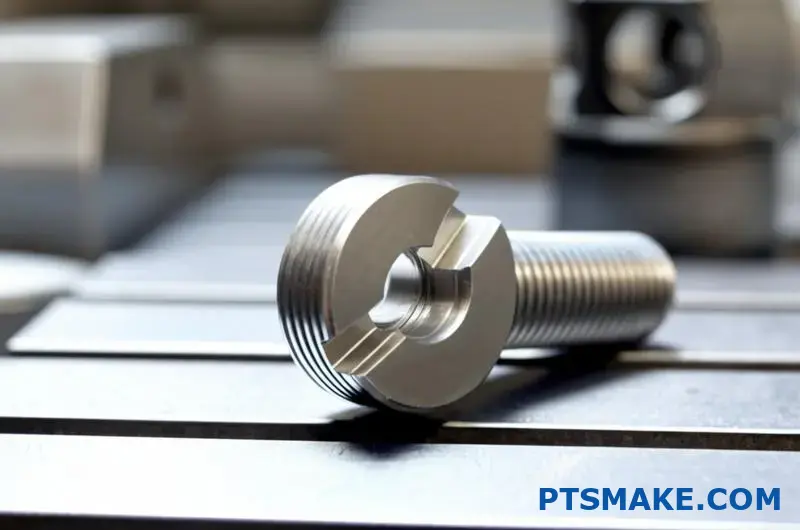
- Thermal management: Controlling heat to prevent dimensional changes during machining
- Toolpath optimization: Minimizing tool deflection to achieve precise offsets
- Fixture design: Creating custom workholding solutions that reference the true centerline
- In-process measurement: Verifying critical dimensions throughout the machining cycle
- Tool selection: Choosing appropriate tooling for specific materials and features
At PTSMAKE, our multi-axis CNC turning centers allow us to produce eccentric screws with eccentricity tolerance within ±0.01mm, meeting the most demanding applications in aerospace and medical industries.
Specialized Equipment Requirements
Producing high-precision eccentric screws demands specialized manufacturing equipment beyond standard fastener production capabilities.
Key Equipment for Cold Heading Eccentric Screws
- Multi-die cold headers: Typically 4-6 station headers with progressive forming capabilities
- Custom die sets: Specifically designed for creating the eccentric relationship
- Automated inspection systems: In-line vision and measurement systems to verify eccentricity
- Material handling automation: For high-volume production requirements
Thread Rolling Equipment Considerations
- Cylindrical die thread rollers: For higher precision applications
- Flat die thread rollers: For higher volume production
- Thread verification systems: Specialized gauging for eccentric threaded components
- Custom thread roll dies: Designed to accommodate the eccentric nature of the parts
Advanced CNC Equipment Requirements
For machining eccentric screws, several specialized capabilities are essential:
- Multi-axis CNC turning centers: 5-axis or greater capability for complex geometries
- Live tooling capability: For creating features perpendicular to the main axis
- High-precision collet systems: For secure workholding with minimal runout
- Automated measurement systems: For in-process verification of critical dimensions
- Thread whirling attachments: For producing specialized thread forms
Quality Control in Eccentric Screw Manufacturing
The unique geometry of eccentric screws requires specialized quality control approaches beyond standard fastener inspection methods.
Typically, a comprehensive quality control protocol includes:
- Raw material verification: Testing for chemical composition and mechanical properties
- First article inspection: Complete dimensional verification of initial production units
- In-process gauging: Checking critical dimensions during manufacturing
- Eccentricity measurement: Using specialized fixtures and indicators to verify the offset relationship
- Thread inspection: Using thread gauges and optical comparators to verify thread profile
- Material hardness testing: Verifying proper heat treatment when applicable
- Functional testing: Ensuring the eccentric action performs as intended in assembly
At PTSMAKE, we’ve developed custom gauging specifically for verifying eccentric screw geometry, allowing us to maintain consistent quality across production runs of all sizes.
Design Considerations and Custom Solutions
Ever wondered what makes the perfect eccentric screw for your specific application? The secret lies not in off-the-shelf solutions, but in thoughtful design considerations tailored to your unique manufacturing challenges.
Designing eccentric screws requires balancing precise offset dimensions, selecting appropriate head configurations, and choosing optimal threading options – considerations that vary dramatically across industries from automotive systems to medical devices.
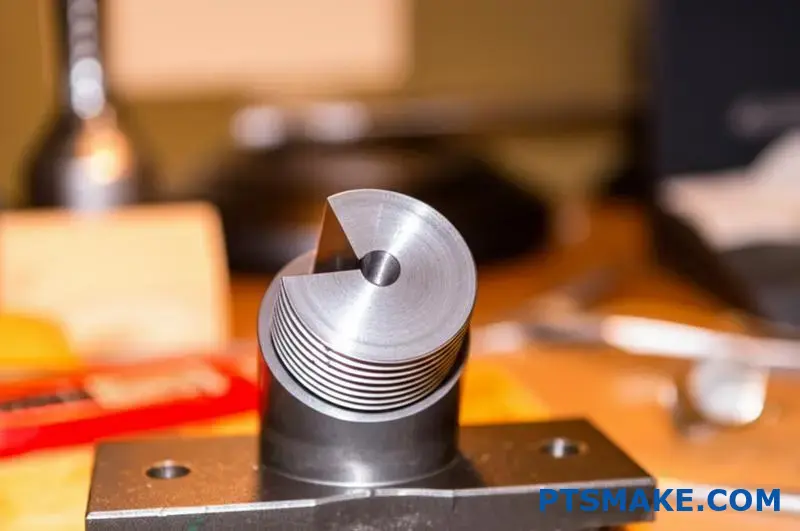
Creating effective eccentric screws is a delicate balance of engineering principles and application-specific requirements. Throughout my time at PTSMAKE, I’ve found that the most successful eccentric screw implementations begin with thorough analysis of the mechanical system they’ll operate within. This approach ensures the component will perform reliably under real-world conditions.
Critical Design Parameters for Eccentric Screws
The performance of an eccentric screw hinges on several key design elements that must be carefully calibrated to the specific application requirements:
Eccentricity Specifications
The defining characteristic of these specialized fasteners is their offset dimension – the distance between the shaft centerline and the head centerline. This measurement directly determines:
- The range of adjustment the screw will provide
- The mechanical advantage created during rotation
- The precision of positioning possible in the application
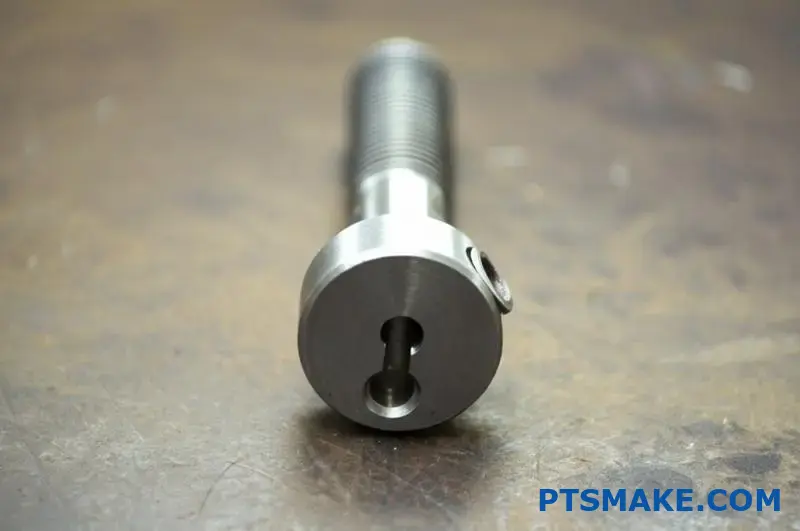
When designing eccentric screws, we typically classify them by their eccentricity ratio – the offset distance relative to the shaft diameter. The table below outlines common applications based on this ratio:
| Eccentricity Ratio | Typical Applications | Adjustment Precision |
|---|---|---|
| Low (0.05-0.15) | Fine adjustment mechanisms, optical equipment | Micrometer-level precision |
| Medium (0.15-0.3) | Machinery alignment, automotive components | Sub-millimeter adjustments |
| High (0.3-0.5) | Tensioning systems, large equipment alignment | Millimeter-range adjustments |
| Very High (>0.5) | Special applications, cam replacements | Coarse adjustments |
Most industrial applications fall within the medium range, striking a balance between adjustment capability and structural integrity. However, we’re seeing increasing demand for low-ratio eccentric screws in precision electronics manufacturing where miniaturization4 is critical.
Head Configuration Options
The head design significantly impacts both functionality and usability:
Hex Heads: Offer excellent torque application and are ideal for applications requiring frequent adjustment with standard tools.
Socket Heads: Provide a lower profile while maintaining good torque capability, making them suitable for space-constrained applications.
Knurled Heads: Enable tool-free adjustment, perfect for applications requiring frequent changes by operators.
Custom Profiles: Specialized head designs for unique applications or proprietary systems.
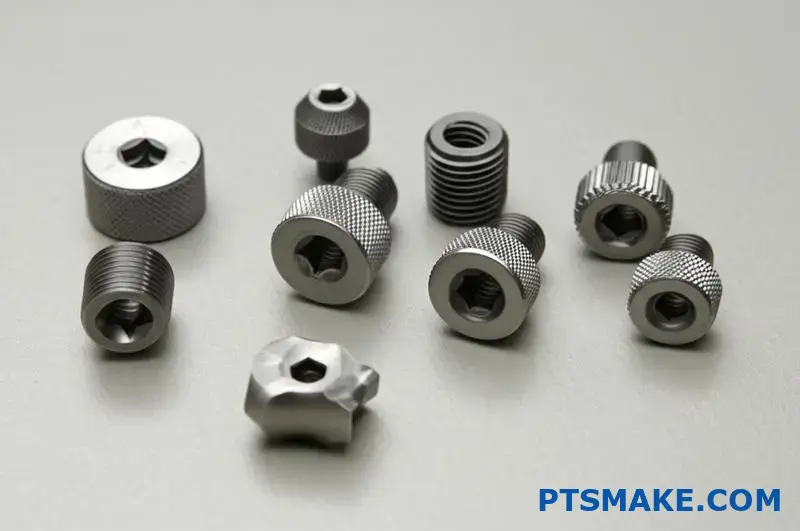
At PTSMAKE, we’ve developed several proprietary head designs that offer improved ergonomics for hand adjustment while maintaining compatibility with standard tooling. This dual-purpose approach has proven particularly valuable in assembly-line equipment where both maintenance technicians and operators need access.
Threading Considerations
Thread specifications must be carefully matched to the application requirements:
Thread Pitch: Finer pitches provide greater precision and resistance to vibration loosening, while coarser pitches offer faster adjustment and higher load capacity.
Thread Profile: Standard profiles (metric, UNC, UNF) work for most applications, but specialized profiles like buttress or acme threads may be necessary for high-load applications.
Thread Length: The threaded portion must be sufficient for the application without compromising the eccentric functionality.
Thread Class/Fit: Tighter tolerance classes (like 2A/2B) provide more precise positioning but may increase manufacturing costs.
For critical applications, we often recommend specialized thread treatments such as rolled threads (rather than cut) for superior strength and wear resistance. This manufacturing choice can extend service life by up to 30% in high-cycle applications.
Application-Specific Design Solutions
Different industries present unique challenges that require specialized eccentric screw designs:
Automotive Industry Solutions
In automotive applications, eccentric screws must withstand vibration, temperature fluctuations, and potentially corrosive environments. Our design approach typically includes:
- Vibration-resistant thread profiles with optional thread-locking features
- Corrosion-resistant materials or coatings (zinc, zinc-nickel, or geomet)
- Precision eccentricity tolerances to ensure consistent adjustment during vehicle assembly
- Specialized head designs that accommodate automated assembly tools
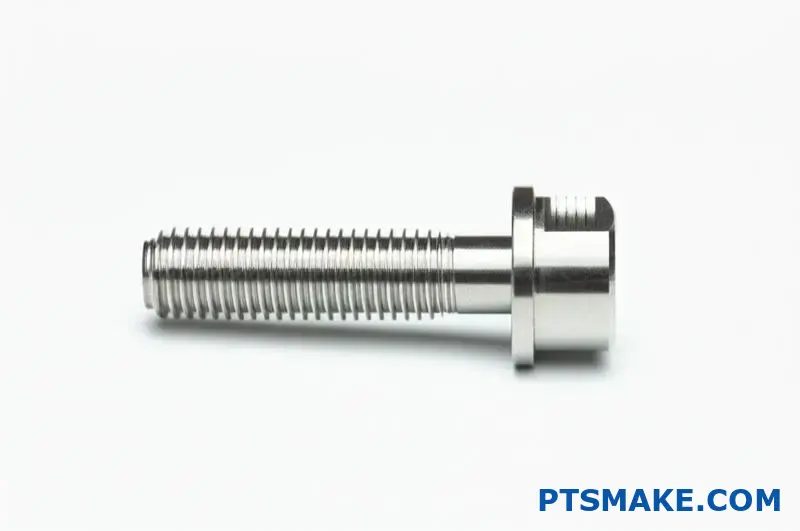
One particularly successful design we developed for a major automotive client features a dual-eccentric system where two offset profiles work together to provide extremely fine adjustment capability for headlight aiming mechanisms.
Aerospace Applications
The aerospace sector demands the highest levels of precision and reliability:
- Ultra-precise eccentricity tolerances (typically within ±0.005mm)
- Lightweight materials such as titanium or aluminum alloys to reduce overall weight
- Specialized locking mechanisms to prevent loosening under vibration
- Complete material traceability and certification
For aircraft control system applications, we’ve developed eccentric screws with serialized tracking and specialized surface treatments that enhance their resistance to galvanic corrosion when used with carbon fiber components.
Medical Device Considerations
Medical applications introduce unique requirements:
- Biocompatible materials like 316L stainless steel or titanium
- Mirror-finish surface requirements for infection control
- Non-magnetic options for MRI compatibility
- Specialized cleaning and passivation processes
Our experience in medical device manufacturing has led to the development of eccentric screw designs specifically for orthopedic surgical tools, where precise adjustment capabilities directly impact surgical outcomes.
Custom Design Process at PTSMAKE
When developing customized eccentric screw solutions, we follow a structured process to ensure optimal results:
Requirements Analysis: Comprehensive evaluation of functional requirements, environmental conditions, and performance expectations.
Design Iteration: Development of initial designs with 3D modeling and simulation to evaluate performance before prototyping.
Prototype Manufacturing: Rapid production of sample components for testing and validation.
Performance Testing: Rigorous evaluation under simulated operating conditions to verify functionality and durability.
Design Refinement: Optimization based on test results to enhance performance and manufacturability.
Production Implementation: Transition to efficient manufacturing processes while maintaining critical design parameters.
This collaborative approach has proven particularly effective for clients in rapidly evolving industries where standard components simply can’t meet specialized requirements.
Balancing Cost and Performance
Designing custom eccentric screws inevitably involves balancing performance requirements with cost considerations. Several strategies can help optimize this balance:
Strategic Material Selection: Choosing materials that meet performance requirements without unnecessary over-specification.
Design for Manufacturability: Incorporating features that simplify production without compromising functionality.
Standardization Where Possible: Using standard dimensions and features where they don’t impact critical performance.
Volume Considerations: Designing with production quantity in mind, as different approaches may be optimal for prototype, small batch, or mass production.
By carefully considering these factors early in the design process, we can develop eccentric screw solutions that deliver optimal performance while remaining economically viable for the specific application.
Quality Control and Testing Procedures
What’s the invisible factor that separates exceptional eccentric screws from those that fail prematurely? It’s not the material or design alone—it’s the rigorous quality control that ensures every component meets exacting standards before reaching your production line.
Quality control in eccentric screw manufacturing represents a critical intersection of metrology, materials science, and engineering expertise, where specialized inspection techniques verify the precise dimensional relationships that enable these components to perform their unique adjustment functions.

In my work at PTSMAKE, I’ve found that quality control for eccentric screws requires specialized approaches that go beyond standard fastener inspection protocols. The intentional offset between head and shaft centers—the very feature that makes these components valuable—also creates unique verification challenges that demand purpose-built inspection methods.
Dimensional Verification Techniques
The cornerstone of eccentric screw quality control lies in verifying the critical dimensional relationships that define its functionality.
Eccentricity Measurement Methods
Accurately measuring the offset between the shaft centerline and head centerline presents a unique inspection challenge. Several methods provide effective verification:
Optical Comparators: These projection-based systems allow visual comparison against master templates, providing quick verification for moderate tolerance requirements.
Coordinate Measuring Machines (CMM): For the highest precision requirements, CMMs can map the actual dimensional relationships in three dimensions, providing comprehensive data on eccentricity.
Vision Systems: Automated vision inspection systems can rapidly check eccentricity on high-volume production lines, using edge detection algorithms to identify centerlines.
Custom Gauging: Purpose-built fixtures that physically verify the eccentric relationship through mechanical means.
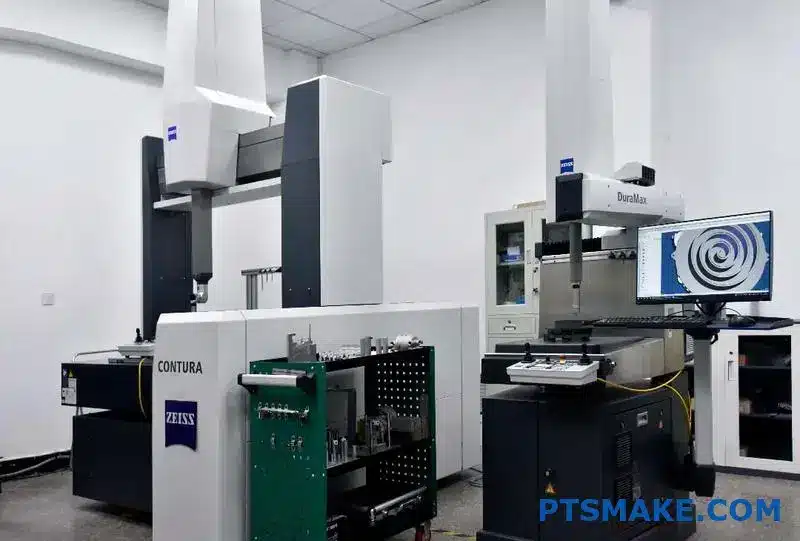
The selection of measurement technique depends largely on the required tolerance and production volume. For aerospace applications requiring tolerances within ±0.005mm, CMM inspection may be mandatory, while commercial hardware might use optical techniques for faster verification.
Thread Quality Inspection
Since the thread integrity directly impacts both assembly and functional performance, thread inspection forms a critical part of quality control:
| Inspection Method | What It Verifies | Typical Applications |
|---|---|---|
| Thread Ring Gauges | GO/NO-GO verification of external threads | Production line inspection |
| Thread Plug Gauges | GO/NO-GO verification of internal threads | Mating component inspection |
| Optical Thread Inspection | Thread profile, pitch, angle | High-precision requirements |
| Laser Thread Scanning | Complete thread form mapping | Critical applications |
For eccentric screws used in high-vibration environments, thread quality inspection takes on special importance as thread integrity directly impacts resistance to self-loosening.
Surface Finish Verification
The surface finish of eccentric screws affects both functional performance and corrosion resistance:
- Profilometers: Measure surface roughness parameters like Ra (average roughness) and Rz (peak-to-valley height)
- Visual Comparison Standards: Used for quick verification against standardized samples
- Reflectivity Testing: Provides quantitative data on surface smoothness
In applications with specific friction requirements—like automotive suspension components—surface finish verification ensures consistent torque-tension relationships during adjustment.
Material Testing and Verification
Beyond dimensional inspection, material verification ensures the eccentric screw will perform as expected under operating conditions.
Hardness Testing Protocols
Hardness testing provides critical insight into the mechanical properties of the finished component:

- Rockwell Hardness Testing: The most common method for finished fasteners, typically using the B or C scales
- Vickers Microhardness: Used for case-hardened parts or when testing specific regions
- Portable Hardness Testers: Enable field verification without destroying components
For eccentric screws that will experience high loading, specific hardness ranges must be verified to prevent both brittleness and excessive deformation under load.
Chemical Composition Analysis
Ensuring the correct material composition is critical, especially for applications with specific requirements:
- X-Ray Fluorescence (XRF): Non-destructive elemental analysis for material verification
- Optical Emission Spectroscopy: Provides detailed chemical composition analysis
- Material Certification Reviews: Verification of mill certifications and traceability
At PTSMAKE, we maintain strict material segregation protocols and verification testing to prevent material mix-ups that could lead to catastrophic failures in critical applications.
Coating and Plating Inspection
For coated eccentric screws, additional verification ensures proper protection:
- Coating Thickness Measurement: Using magnetic, eddy current, or X-ray techniques
- Salt Spray Testing: Verifies corrosion resistance under accelerated conditions
- Adhesion Testing: Ensures coating will remain intact during installation and use
When designing quality control protocols for plated eccentric screws, we pay special attention to potential hydrogen embrittlement issues that can occur during certain plating processes.
Functional Testing Approaches
While dimensional and material verification form the foundation of quality control, functional testing confirms that the eccentric screw will perform as intended in its application.
Torque-Tension Relationship Testing
For fastener applications, understanding the relationship between applied torque and developed tension is crucial:
- Torque-Tension Analyzers: Measure the actual tension developed at various torque values
- Coefficient of Friction Testing: Determines the consistency of friction characteristics
- Prevailing Torque Testing: For self-locking fasteners to verify retention capabilities
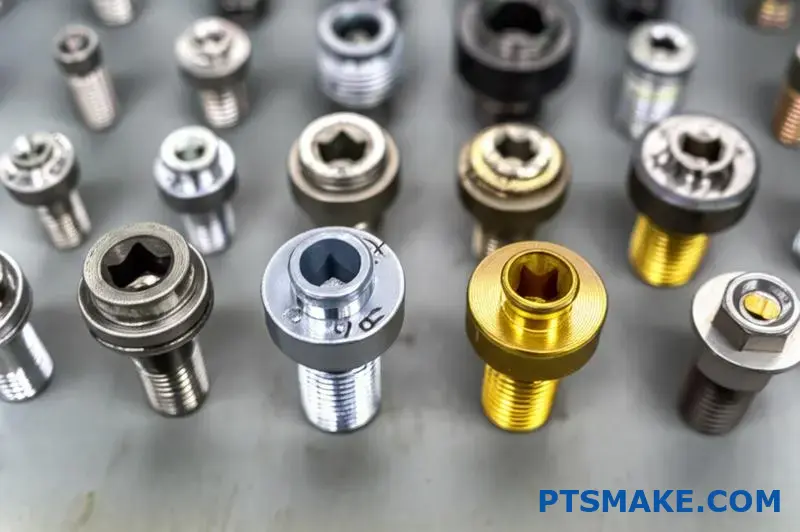
This testing is particularly important for eccentric screws used in adjustment applications where predictable movement under specific torque is essential.
Cycle Testing for Adjustment Mechanisms
Since many eccentric screws are designed for repeated adjustment, cycle testing verifies durability:
- Automated Cycling Equipment: Simulates repeated adjustment operations
- Wear Measurement: Quantifies material loss after specified numbers of cycles
- Thread Integrity Verification: Confirms threads maintain functional geometry after repeated use
We recently conducted extensive cycle testing for a client in the optical equipment industry, demonstrating that our eccentric adjustment screws maintained precise positioning capability after 10,000 adjustment cycles.
Environmental Testing
For applications in challenging environments, additional testing verifies performance under specific conditions:
- Temperature Cycling: Verifies function across specified temperature ranges
- Corrosion Testing: Beyond standard salt spray tests, can include industry-specific environmental exposures
- Vibration Resistance: Particularly important for automotive and aerospace applications
Statistical Process Control Implementation
Effective quality control for eccentric screws requires more than individual component testing—it demands systematic monitoring of the entire manufacturing process.
Key SPC Parameters for Eccentric Screws
The most effective Statistical Process Control (SPC) implementations focus on these critical parameters:
- Eccentricity Value: The precise offset between centerlines
- Thread Dimensions: Pitch diameter, major diameter, and minor diameter
- Material Hardness: Maintained within specified ranges
- Surface Finish: Particularly for bearing surfaces
By monitoring these parameters throughout production, trends can be identified and corrected before they result in non-conforming parts.
Process Capability Studies
Understanding the inherent capability of manufacturing processes is essential when producing precision components:
- Cp/Cpk Analysis: Measures process capability relative to specification limits
- Gage R&R Studies: Evaluate measurement system variation
- Process FMEA: Identifies potential failure modes in manufacturing
At PTSMAKE, we maintain minimum Cpk values of 1.33 for standard dimensions and 1.67 for critical features in our eccentric screw production, ensuring consistent quality with minimal variation.
Non-Conformance Handling
Even with robust prevention systems, effective handling of non-conforming parts is essential:
- Root Cause Analysis: Structured approach to identifying underlying causes
- Corrective Action Procedures: Documented processes for addressing issues
- Preventive Measures: Implementation of systems to prevent recurrence
Quality Documentation and Traceability
Complete documentation provides both verification of quality and traceability for troubleshooting if issues arise.
For eccentric screws used in critical applications, we typically provide:
- Material Certifications: Documenting chemical and mechanical properties
- Dimensional Reports: Comprehensive measurement data for critical features
- Process Records: Documentation of all manufacturing operations
- Test Results: Performance verification data specific to application requirements
This documentation not only demonstrates compliance but provides valuable reference information for future design iterations or problem-solving.
By implementing comprehensive quality control protocols specifically designed for eccentric screw manufacturing, we can ensure that these specialized components will perform reliably in even the most demanding applications. The metrological verification5 process may require additional investment, but it pales in comparison to the cost of component failure in critical systems.
Practical Applications in Vehicle Manufacturing
Ever wondered how your car achieves that perfect balance between stability and comfort? Behind every smooth ride and precise steering response lies a hidden hero—the eccentric screw, quietly performing critical alignment adjustments that keep you safely on the road.
Eccentric screws play a fundamental role in modern automotive engineering, enabling precise adjustments in camber angles, wheel alignment, and suspension systems that would be impossible with conventional fasteners, ultimately ensuring optimal vehicle performance and safety.
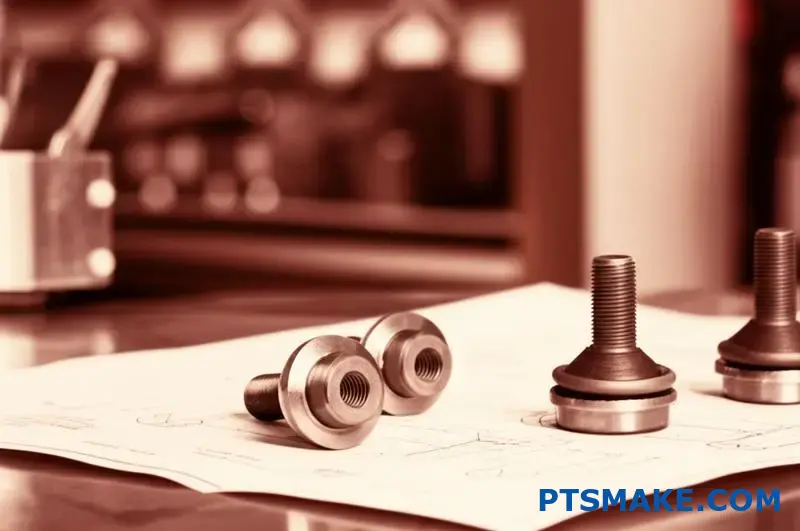
The automotive industry represents one of the most demanding environments for precision fasteners, where tolerances are measured in fractions of a millimeter and performance directly impacts safety. Throughout my work with automotive manufacturers at PTSMAKE, I’ve seen firsthand how eccentric screws solve complex alignment challenges that would otherwise require complete redesigns or significantly more expensive components.
Critical Automotive Applications for Eccentric Screws
The unique offset design of eccentric screws makes them particularly valuable for precise adjustment applications throughout modern vehicles. Let’s examine the most important implementations:
Camber Angle Adjustment Mechanisms
Camber angle—the vertical tilt of the wheels when viewed from the front—directly impacts vehicle handling, tire wear, and safety. Getting this angle precisely correct is critical:
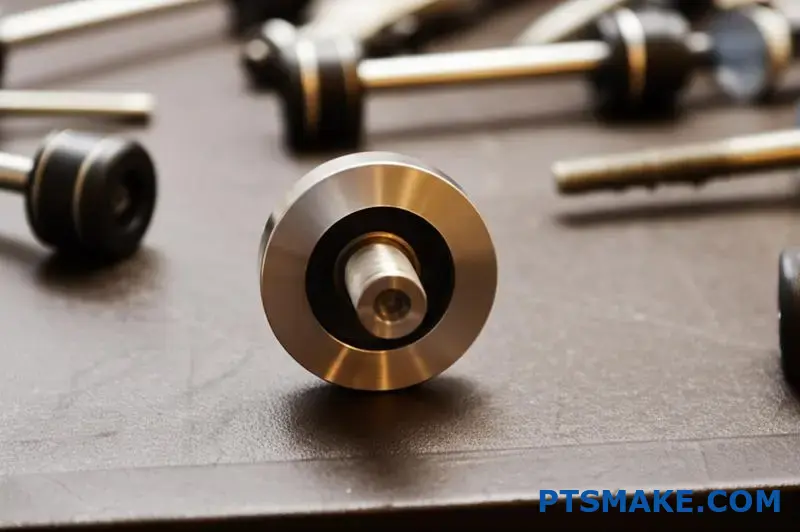
- Adjustment Requirements: Modern vehicles typically require camber adjustments within ±2° with precision increments of 0.1°
- Traditional Solutions: Historically required slotted mounting plates or shims, which were imprecise and time-consuming to adjust
- Eccentric Screw Implementation: Strategic placement of eccentric screws at suspension mounting points allows technicians to make precise, repeatable camber adjustments by simply rotating the fastener
The beauty of using eccentric screws for camber adjustment lies in their simplicity. By integrating the adjustment mechanism directly into the fastener, manufacturers eliminate the need for additional components while providing more precise control. At PTSMAKE, we’ve developed specialized eccentric screws with controlled-friction surfaces that prevent unwanted rotation after adjustment while still allowing deliberate changes when needed.
Wheel Alignment Systems
Beyond camber, proper wheel alignment encompasses multiple angles that must work together for optimal vehicle performance:
| Alignment Parameter | Function | Typical Adjustment Range | Eccentric Screw Benefit |
|---|---|---|---|
| Toe Angle | Controls straight-line stability | ±0.5° | Fine incremental adjustment |
| Caster Angle | Affects steering return and stability | 2° to 5° | Precise positioning without slippage |
| Steering Axis Inclination | Influences steering feel | 12° to 14° | Maintains setting under vibration |
Modern alignment systems increasingly use eccentric screws at multiple adjustment points, creating a comprehensive solution that allows technicians to achieve factory specifications with greater efficiency. This approach significantly reduces alignment time while improving accuracy—a win for both service centers and vehicle owners.
Suspension System Applications
Vehicle suspension systems must balance conflicting requirements of comfort, handling, and durability:
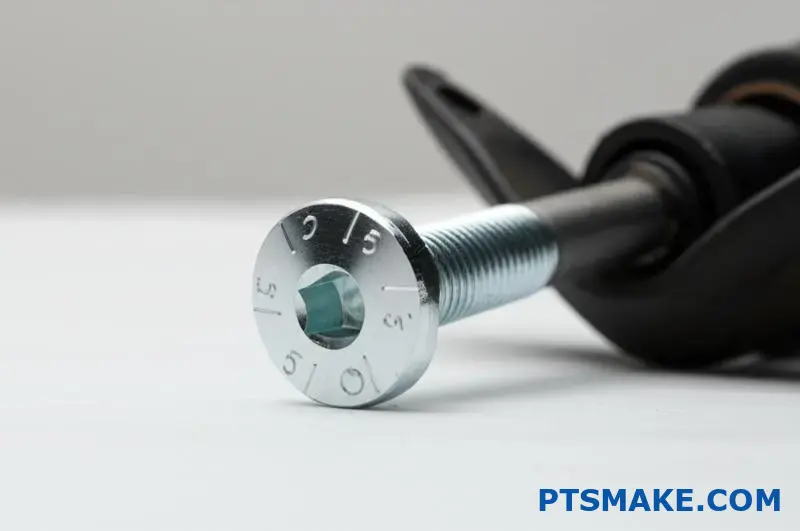
- Subframe Positioning: Eccentric screws allow precise positioning of suspension subframes relative to the chassis, controlling wheel alignment and suspension geometry
- Control Arm Mounting: Strategic use of eccentric mounting points enables fine-tuning of suspension geometry throughout the vehicle’s service life
- Anti-Roll Bar Adjustments: Eccentric connections permit tension adjustments that control body roll characteristics
One particularly innovative application we’ve developed involves dual-eccentric fasteners6 that provide two-axis adjustment from a single mounting point. This solution has proven especially valuable in aftermarket performance applications where more extensive adjustment ranges are desired without compromising mounting strength.
Drive Train and Powertrain Applications
Beyond suspension and steering, eccentric screws solve critical challenges throughout vehicle drivetrains:
- Belt Tensioner Mechanisms: Eccentric mounting points create adjustable tension for timing belts, accessory drives, and other belt systems
- Differential Carrier Alignment: Precise positioning of differential carriers ensures proper gear mesh and quiet operation
- Engine Mount Positioning: Fine adjustment of engine position relative to the chassis improves NVH (Noise, Vibration, Harshness) characteristics
In hybrid and electric vehicles, we’re seeing increased application of eccentric positioning systems for battery pack mounting, where precise alignment is essential for both electrical connections and thermal management.
Design Challenges in Automotive Applications
Creating eccentric screws for automotive use presents several unique challenges that must be addressed through careful engineering:
Vibration Resistance Requirements
Unlike stationary applications, automotive eccentric screws must maintain their position despite constant vibration:
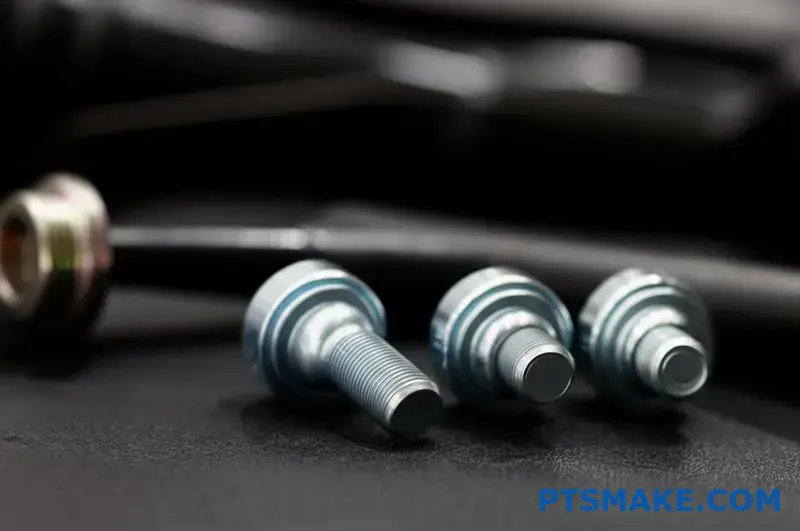
- Thread Design: Modified thread profiles with interference characteristics help prevent vibration-induced loosening
- Retention Features: Secondary locking mechanisms such as prevailing torque elements, thread adhesives, or mechanical locks
- Material Selection: Specialized alloys with optimal elastic properties that resist fatigue while maintaining adjustment capabilities
For critical suspension components, most manufacturers specify eccentric fasteners with minimum prevailing torque values that provide consistent resistance to rotation while still allowing deliberate adjustment when needed.
Corrosion Resistance Considerations
The automotive environment exposes fasteners to multiple corrosion challenges:
- Road Salt Exposure: Particularly severe in northern climates, requiring enhanced corrosion protection
- Galvanic Compatibility: Must be compatible with aluminum, steel, and composite components without creating galvanic cells
- Coating Systems: Multi-layer protection systems including zinc-nickel plating, e-coating, or specialized corrosion-resistant alloys
At PTSMAKE, we typically recommend zinc-nickel coatings with appropriate sealers for eccentric screws in underbody applications, providing over 1,000 hours of salt spray resistance while maintaining precise dimensional control of the eccentric features.
Load-Bearing Requirements
Unlike standard fasteners that primarily serve connecting functions, automotive eccentric screws often bear significant structural loads:
- Shear Strength: Must withstand lateral forces, especially in suspension applications
- Fatigue Resistance: Need to maintain integrity despite cyclic loading over hundreds of thousands of miles
- Tensile Strength: Required to maintain clamp loads that prevent component separation under dynamic conditions
The engineering challenge lies in creating sufficient eccentricity for adjustment while maintaining the structural integrity needed for safety-critical applications. This often requires sophisticated finite element analysis and physical testing to validate designs before implementation.
Manufacturing Considerations for Automotive Applications
The demanding nature of automotive applications requires specialized manufacturing approaches for eccentric screws:
Material Selection Criteria
Automotive-grade eccentric screws typically utilize these materials:
- Medium Carbon Alloy Steels: Such as SAE 4140 or 5140, heat treated to specific hardness ranges
- Stainless Steels: 410 or 17-4 PH for applications requiring enhanced corrosion resistance
- Specialized Alloys: Custom formulations for unique applications combining strength, corrosion resistance, and weight considerations
Surface Treatment Options
Surface treatments play a crucial role in both function and longevity:
- Zinc-Based Coatings: Provide baseline corrosion protection
- Zinc-Nickel: Enhanced corrosion resistance for severe environments
- Friction-Controlling Coatings: Specialized treatments that provide consistent torque-tension relationships critical for proper adjustment
Quality Control Requirements
Automotive eccentric screws require enhanced quality protocols:
- 100% Dimensional Verification: Every eccentric feature must be verified to ensure proper adjustment range
- Torque-Tension Testing: Validation of consistent relationship between applied torque and developed clamp load
- Lot Traceability: Complete tracking from raw material through manufacturing and delivery
Case Study: Solving Wheel Alignment Challenges
One recent collaboration with a European vehicle manufacturer illustrates the value of eccentric screw technology in solving complex engineering challenges. The manufacturer faced persistent alignment issues with a new lightweight suspension design, where traditional adjustment methods proved inadequate.
By developing a multi-axis eccentric screw system that enabled fine adjustments in three planes simultaneously, we helped create a solution that:
- Reduced alignment time by 62% compared to the previous design
- Improved alignment precision by a factor of three
- Maintained settings more reliably under real-world driving conditions
- Decreased warranty claims related to uneven tire wear by 78%
This solution has since been implemented across multiple vehicle platforms, demonstrating how specialized fastener technology can solve seemingly complex engineering challenges with elegantly simple solutions.
Surface Treatments and Finishing Options
Ever wonder why some eccentric screws last for decades in harsh environments while others fail within months? The secret lies not in the base material, but in the specialized surface treatments that transform ordinary components into corrosion-resistant, wear-optimized precision parts.
Surface treatments for eccentric screws represent a critical engineering decision that directly impacts performance, longevity, and reliability, with options ranging from electroless nickel plating to black oxide and dacromet coatings, each providing specific functional benefits beyond mere corrosion protection.
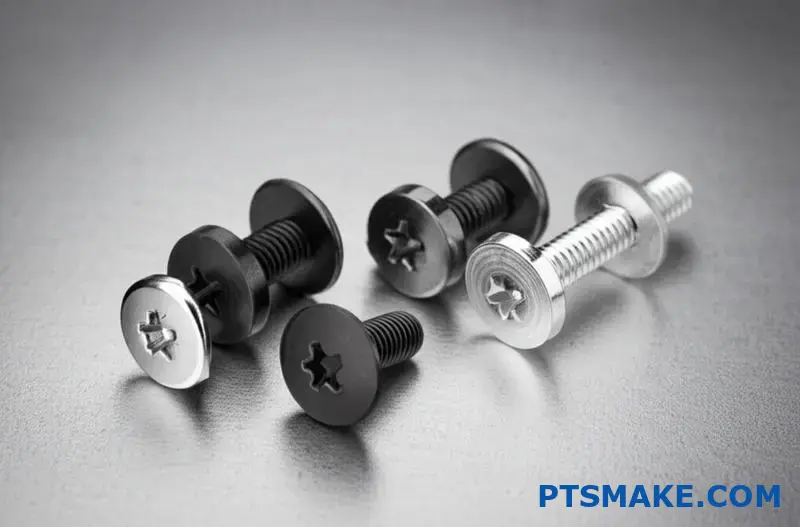
The right surface treatment can transform an ordinary eccentric screw into a component capable of withstanding the most demanding environments. Through my experience at PTSMAKE, I’ve seen firsthand how the proper coating technology can extend component life by several magnitudes while enhancing critical performance characteristics that go far beyond simple corrosion resistance.
Electroless Nickel Plating: Precision with Protection
Electroless nickel plating stands as one of the most versatile surface treatments for eccentric screws, offering a remarkable combination of properties that make it ideal for precision applications.
Process Fundamentals
Unlike traditional electroplating that requires electrical current, electroless nickel deposition occurs through a controlled chemical reaction:
- The eccentric screw undergoes thorough cleaning and preparation
- It’s immersed in a solution containing nickel salts, reducing agents, and stabilizers
- A controlled autocatalytic reaction deposits nickel onto all surfaces
- The process continues until the desired coating thickness is achieved

The beauty of this process lies in its ability to create exceptionally uniform coatings regardless of part geometry. For eccentric screws specifically, this means:
- Every surface receives equal protection, including threads and blind holes
- Dimensional consistency is maintained to extremely tight tolerances
- The process doesn’t create directional stress that could affect component performance
Key Benefits for Eccentric Screw Applications
Electroless nickel provides several advantages that make it particularly valuable for precision eccentric screws:
- Hardness: Can be heat-treated to achieve hardness values up to 68 HRC, providing exceptional wear resistance
- Dimensional Precision: Deposits uniformly without building up on edges or recesses
- Corrosion Resistance: Offers excellent protection against a wide range of chemical environments
- Lubricity: Lower coefficient of friction than bare steel, improving adjustment smoothness
- Non-magnetic Options: Can be formulated for non-magnetic applications when required
Industry Applications
This coating shines in several specific eccentric screw applications:
| Industry | Application | Key Benefit |
|---|---|---|
| Medical Equipment | Adjustment mechanisms | Biocompatibility and precision |
| Food Processing | Conveyor adjusters | Corrosion resistance and food safety |
| Semiconductor | Alignment fixtures | Non-magnetic properties and precision |
| Aerospace | Control surface adjusters | Reliability and wear resistance |
At PTSMAKE, we’ve developed specialized electroless nickel formulations with incorporated PTFE for applications requiring minimal stick-slip behavior during fine adjustments.
Black Oxide: Economical Protection with Dimensional Stability
Black oxide stands as one of the most traditional yet effective treatments for eccentric screws when moderate corrosion protection and excellent dimensional stability are required.
Process Overview
The black oxide process creates a magnetite (Fe₃O₄) conversion coating through a series of chemical reactions:
- The parts undergo thorough cleaning and degreasing
- They’re immersed in alkaline salt solutions at specific temperatures
- A controlled chemical reaction converts the surface iron to black iron oxide
- The parts receive a final oil or wax topcoat to enhance protection
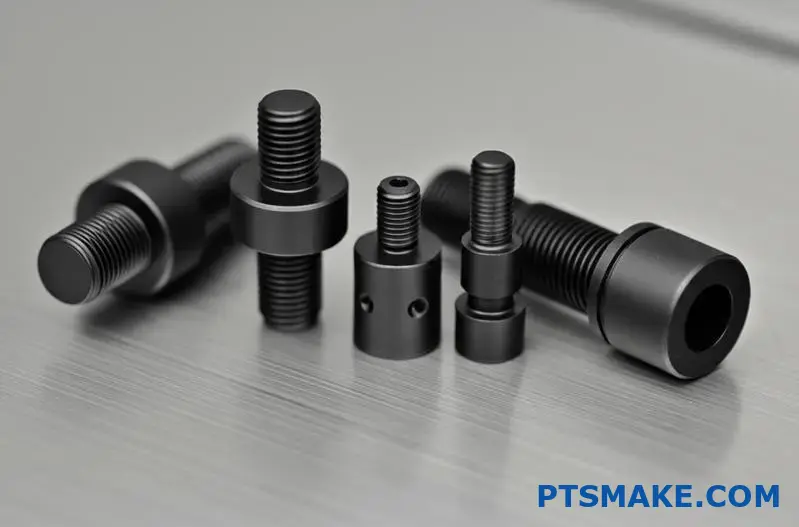
Functional Advantages
Black oxide offers several advantages that make it particularly suitable for certain eccentric screw applications:
- Minimal Dimensional Change: The coating is typically only 0.5-1.5 microns thick, preserving precise tolerances
- Enhanced Appearance: Provides an attractive matte black finish
- Improved Break-In Properties: Retains oil, reducing initial wear during adjustment
- Cost-Effectiveness: Significantly more economical than plated coatings
- Temperature Resistance: Maintains integrity at higher temperatures than many alternative coatings
Optimal Application Scenarios
Black oxide works best for eccentric screws in these situations:
- Indoor or light industrial environments with moderate corrosion exposure
- Applications requiring frequent adjustment where dimensional precision is critical
- Cost-sensitive implementations where more expensive coatings aren’t justified
- High-temperature applications where other coatings might deteriorate
One of our manufacturing clients uses black oxide-treated eccentric screws exclusively in their assembly line equipment, finding the perfect balance between protection, adjustment precision, and economic value.
Dacromet and Geomet Coatings: Superior Corrosion Resistance
For eccentric screws exposed to harsh environments, zinc-rich coatings like Dacromet and Geomet provide exceptional protection while maintaining functional performance.
Coating Composition and Application
These zinc-rich systems consist of:
- Zinc and aluminum flakes in an inorganic matrix
- Specialized chromium-free binders
- Application through dip-spin or spray processes
- Curing at elevated temperatures to create a durable finish
The sacrificial protection7 mechanism works by allowing the zinc to corrode preferentially, protecting the underlying steel even when the coating is damaged.
Performance Characteristics
These coatings offer several advantages for eccentric screws in demanding environments:
- Superior Corrosion Resistance: Typically providing 1,000+ hours of salt spray protection
- Consistent Coefficient of Friction: Critical for reliable torque-tension relationships
- Temperature Resistance: Maintains integrity up to 300°C (depending on formulation)
- Chemical Resistance: Withstands exposure to fuels, oils, and many industrial chemicals
- Environmental Compliance: Modern formulations meet RoHS and ELV directives

Ideal Applications
These coatings excel in several specific eccentric screw applications:
- Automotive suspension and chassis components exposed to road salt and environmental elements
- Outdoor equipment adjustment mechanisms in coastal or industrial environments
- Military and aerospace applications requiring long-term reliability
- Agricultural equipment exposed to fertilizers and harsh operating conditions
In a recent project at PTSMAKE, we implemented Geomet-coated eccentric screws for a marine equipment manufacturer, extending component life from 2 years to over 8 years in saltwater environments.
Hard Chrome Plating: Maximum Wear Resistance
When eccentric screws face extreme wear conditions, hard chrome plating provides exceptional surface hardness and durability.
Process Fundamentals
Hard chrome plating involves:
- Meticulous surface preparation through cleaning and etching
- Electrodeposition of chromium in a highly controlled bath
- Post-plating treatments to relieve hydrogen embrittlement
- Optional polishing to achieve specific surface finish requirements
Performance Benefits
Hard chrome offers several significant advantages:
- Extreme Hardness: Typically 65-70 HRC, providing exceptional wear resistance
- Low Coefficient of Friction: Reduces adjustment effort and minimizes wear
- Good Corrosion Resistance: Provides moderate protection in many environments
- Heat Resistance: Maintains properties at elevated temperatures
- Dimensional Control: Can be applied in precise thicknesses for critical tolerances
Specialized Applications
Hard chrome plating is particularly valuable for eccentric screws in these situations:
- High-cycle adjustment mechanisms where wear would otherwise cause imprecision
- Applications involving abrasive environments
- Situations where low friction is critical for precise adjustment
- High-temperature environments where other coatings might degrade
A motorsport client uses our hard chrome-plated eccentric screws exclusively in their suspension systems, where frequent adjustments and high loads would quickly wear out conventional components.
Selecting the Optimal Surface Treatment
Choosing the right treatment for eccentric screws requires careful consideration of several factors:
Environmental Exposure Assessment
The operating environment dictates the level of corrosion protection required:
- Indoor, Controlled Environments: Black oxide may be sufficient
- General Industrial Use: Zinc or zinc-nickel plating typically provides adequate protection
- Outdoor or Harsh Chemical Exposure: Dacromet/Geomet or electroless nickel
- Marine or Extreme Environments: Specialized systems combining multiple protective layers
Functional Requirements Analysis
Beyond corrosion, consider these functional needs:
- Wear Resistance: Critical for frequently adjusted screws
- Friction Characteristics: Impacts adjustment precision and feel
- Electrical Conductivity: Important in some electronic applications
- Aesthetic Requirements: Visible components may need specific appearances
Economic Considerations
When evaluating coating options, consider both immediate and lifecycle costs:
- Initial Coating Cost: Ranges from economical (black oxide) to premium (specialized composites)
- Expected Service Life: More durable coatings often justify higher initial costs
- Maintenance Requirements: Some coatings require periodic renewal or protection
- Failure Consequences: In critical applications, coating failure costs extend far beyond the component itself
Regulatory Compliance
Modern surface treatments must meet increasingly stringent regulations:
- RoHS Compliance: Restriction of Hazardous Substances
- REACH Compliance: Registration, Evaluation, Authorization and Restriction of Chemicals
- FDA Compatibility: For food-contact applications
- Industry-Specific Standards: Automotive, aerospace, and medical have additional requirements
At PTSMAKE, we’ve developed a systematic approach to surface treatment selection that weighs these factors against client requirements, helping navigate the complexity of modern coating technologies to find the optimal solution for each specific eccentric screw application.
Industry Trends and Future Developments
What if I told you the humble eccentric screw is on the verge of a technological revolution that could transform multiple industries? From nano-scale precision to smart materials, the future of these unassuming components holds remarkable potential.
The eccentric screw manufacturing industry stands at a fascinating crossroads where traditional mechanical engineering meets cutting-edge technologies like additive manufacturing, smart materials, and digital simulation – creating unprecedented opportunities for component miniaturization and functionality enhancement.
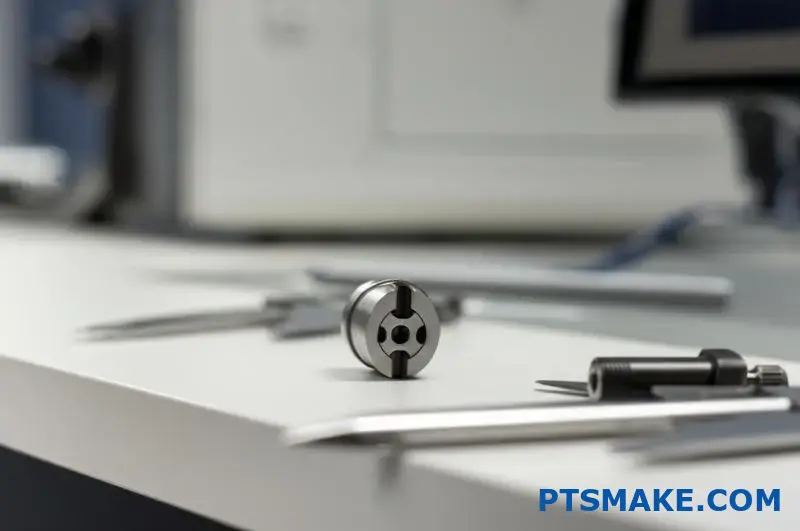
The world of eccentric screw manufacturing is evolving rapidly, driven by technological advances and changing market demands. Based on my experience at PTSMAKE and collaboration with leading manufacturers across various sectors, I’ve identified several transformative trends that are reshaping the industry’s landscape.
Miniaturization: The Small Revolution with Massive Impact
The relentless drive toward smaller, lighter, and more efficient products is fundamentally changing eccentric screw design and manufacturing approaches.
Micro-Eccentric Components
Today’s miniaturization trends are pushing the boundaries of what was once considered possible:
- Sub-millimeter Eccentricity: We’re now regularly producing eccentric screws with precisely controlled offsets as small as 0.05mm for medical and electronics applications
- Micro-threading Technology: Advanced thread-forming techniques enable functional threads on components with diameters under 1mm
- Weight Reduction Engineering: Through material optimization and design refinement, we’re creating components that maintain structural integrity while reducing mass by up to 40%
This miniaturization trend directly supports the development of smaller medical devices, more compact consumer electronics, and lightweight aerospace components. One particularly exciting project at PTSMAKE involved developing eccentric adjustment mechanisms for a robotic surgical device, where our components needed to provide precise adjustment within a package smaller than a pencil eraser.

The challenges of miniaturization are substantial. As dimensions decrease, manufacturing tolerances become increasingly critical. A variance of 0.01mm might be acceptable in a standard component but represents a catastrophic 20% error in a micro-eccentric screw. This has driven significant investments in advanced manufacturing technologies that can consistently maintain ultra-precise tolerances.
Miniaturization Impact Across Industries
| Industry | Application | Miniaturization Benefit |
|---|---|---|
| Medical Devices | Implantable device adjusters | Reduced invasiveness, improved patient outcomes |
| Consumer Electronics | Camera lens positioning | Thinner devices with enhanced functionality |
| Aerospace | Satellite component adjustment | Reduced launch weight, fuel savings |
| Robotics | Micro-actuator alignment | Finer movement control in compact packages |
Advanced Material Innovations
The materials used in eccentric screw manufacturing are evolving rapidly, opening new possibilities for performance enhancement.
Composite Materials Integration
Traditional metallic materials are increasingly being complemented or replaced by advanced composites:
- Carbon Fiber Reinforced Polymers: Offering exceptional strength-to-weight ratios for non-load-bearing adjustment applications
- Ceramic-Metal Composites: Providing extreme wear resistance in hostile environments
- Nano-enhanced Materials: Incorporating carbon nanotubes or graphene to achieve extraordinary property improvements
At PTSMAKE, we recently completed trials with a titanium-ceramic composite for high-temperature applications that maintains precise adjustment capabilities at temperatures exceeding 800°C – a significant advancement for aerospace and industrial applications where traditional materials would lose dimensional stability.
Biologically Compatible Materials
The medical sector is driving innovation in biocompatible eccentric screw materials:
- Ultra-pure Titanium Alloys: Minimizing rejection risks in implantable devices
- PEEK and Other Medical-grade Polymers: Offering radiolucency for improved imaging
- Biodegradable Options: Creating components that serve their purpose and then safely dissolve
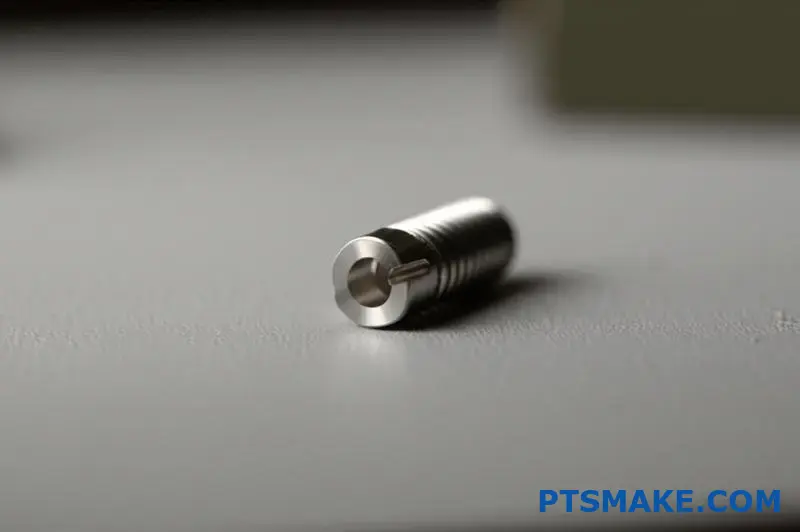
Smart Materials Integration
Perhaps most exciting is the emergence of eccentric screws incorporating smart material technologies:
- Shape Memory Alloys: Enabling temperature-activated adjustment without external tools
- Piezoelectric Elements: Allowing electrical control of micro-adjustments
- Self-sensing Materials: Providing real-time feedback on position and loading conditions
One innovative application we’re developing uses shape memory alloy-based eccentric adjusters in automotive systems. These components can automatically fine-tune suspension geometry based on temperature changes, compensating for thermal expansion throughout the vehicle without requiring electronic control systems.
Additive Manufacturing Revolution
3D printing technologies are transforming eccentric screw production, particularly for specialized applications and complex geometries.
Direct Metal Laser Sintering (DMLS)
DMLS technology enables the creation of eccentric components with previously impossible internal geometries:
- Hollow Core Designs: Significantly reducing weight while maintaining structural integrity
- Integrated Cooling Channels: Enhancing performance in high-temperature applications
- Functionally Graded Materials: Varying material properties throughout a single component
The ability to create complex internal structures opens new possibilities for multi-functional eccentric screws that simultaneously perform adjustment, sensing, and other functions.
Hybrid Manufacturing Approaches
The most promising manufacturing developments combine additive and traditional processes:
- Printed Core with Machined Precision Surfaces: Leveraging the advantages of both approaches
- Selective Reinforcement: Adding high-strength materials exactly where needed
- Post-Process Precision Enhancement: Using traditional machining to achieve final tolerances
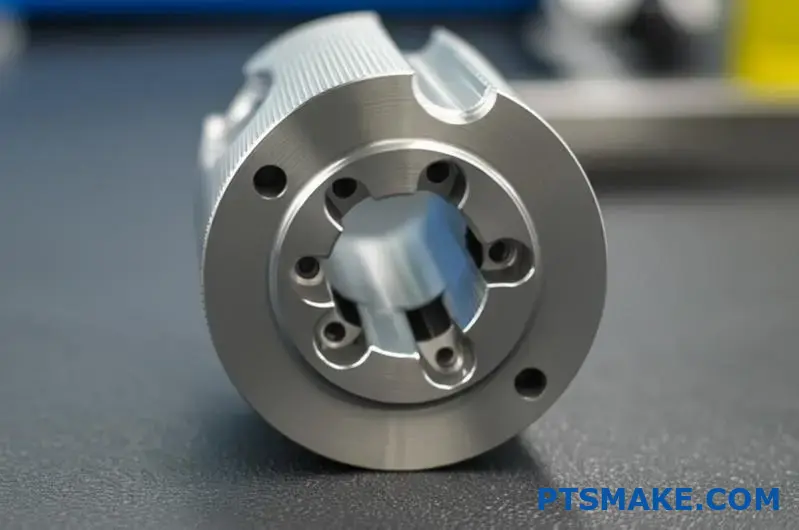
At PTSMAKE, we’ve developed a hybrid manufacturing process that 3D prints the core structure of complex eccentric adjustment components, then uses precision CNC machining to create the critical interface surfaces. This approach reduces material waste by up to 80% while maintaining the precision our customers require.
Digital Integration and Smart Components
The concept of the "smart eccentric screw" is rapidly moving from science fiction to production reality.
Embedded Sensing Capabilities
Next-generation eccentric components increasingly incorporate sensing functionality:
- Position Feedback: Real-time monitoring of adjustment position
- Load Monitoring: Integrated strain gauges to measure applied forces
- Wear Detection: Self-reporting systems that indicate when replacement is needed
IoT Connectivity
Connected eccentric adjustment systems are beginning to appear in sophisticated equipment:
- Remote Adjustment Capabilities: Allowing fine-tuning without physical access
- Predictive Maintenance: Using adjustment data to forecast service needs
- Performance Optimization: Continuous adjustment based on operating conditions
In one recent application, we developed network-connected eccentric adjusters for a printing press manufacturer, enabling remote fine-tuning of registration alignment without stopping production – a capability that reduced setup waste by over 40%.
Sustainable Manufacturing Approaches
Environmental considerations are increasingly driving innovation in eccentric screw manufacturing.
Material Efficiency Improvements
Sustainable manufacturing practices are reducing the environmental footprint of eccentric screw production:
- Near-net-shape Manufacturing: Minimizing material waste during production
- Recycled Material Integration: Using post-industrial metal scrap as feedstock
- Environmentally Friendly Coatings: Replacing traditional plating with more sustainable alternatives
Energy-Optimized Production
Energy-efficient manufacturing processes are becoming industry standards:
- Induction Heating: Replacing conventional heating methods for heat treatment
- Electric Forming Processes: Reducing reliance on hydraulic systems
- Solar-Powered Manufacturing: Integrating renewable energy into production facilities
At PTSMAKE, we’ve reduced our carbon footprint by 30% over the past five years while increasing production volume, demonstrating that sustainability and business growth can go hand-in-hand.
Future-Oriented Manufacturing Processes
The production methods themselves are evolving to meet new challenges and opportunities.
Enhanced Simulation and Digital Twins
Virtual development tools are accelerating innovation:
- FEA-Optimized Designs: Creating geometries that maximize strength while minimizing material
- Process Simulation: Predicting manufacturing outcomes before cutting metal
- Digital Twin Integration: Maintaining virtual models that mirror physical components throughout their lifecycle
Lights-Out Manufacturing Systems
Fully automated production is becoming increasingly common:
- Robotic Cell Integration: Creating seamless production flows with minimal human intervention
- AI-Controlled Quality Systems: Real-time adjustment of manufacturing parameters
- Self-Optimizing Production: Systems that learn and improve with each production run
The integration of these technologies is creating a manufacturing ecosystem where quality, efficiency, and innovation reinforce each other, driving continuous improvement in eccentric screw capabilities.
As we look toward the future, it’s clear that eccentric screw manufacturing is evolving from a traditional mechanical discipline into a high-tech field integrating advanced materials, digital technologies, and sustainable practices. At PTSMAKE, we’re committed to staying at the forefront of these developments, ensuring our clients have access to the most advanced eccentric screw solutions possible for their next-generation products.
Learn how proper eccentricity selection improves component performance and longevity. ↩
Click to learn how galvanic compatibility prevents premature corrosion in multi-material assemblies. ↩
Discover how proper manufacturing methods impact the performance and lifespan of your eccentric screw applications. ↩
Discover how proper sizing in miniaturized components improves assembly durability and precision. ↩
Learn how precise measurement techniques ensure optimal performance in mechanical systems. ↩
Learn about our advanced dual-axis adjustment systems for performance vehicles. ↩
Discover how sacrificial protection mechanisms extend component life in corrosive environments. ↩


